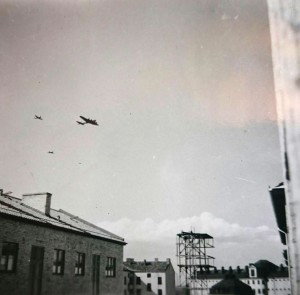17 Sep Interned Aircraft in WWII Sweden
By the time World War II was over, more than three hundred aircraft from various countries had force-landed or crashed in neutral Sweden. According to international law, Sweden was required to intern the foreign aircraft until the war was over. Sweden would take care of the planes at the expense of the home country.
For the storage and repair of American interned aircraft, the Swedish government and the Swedish Royal Air Force authorized the use of four airfields, two for storage of bombers, one for the storage of fighters, and one for major repair work after which the aircraft were moved to one of the storage fields.
The two fields utilized for bomber storage were at Västerås and Såtenäs. The field used for fighter storage was actually the military airport of Stockholm and was located on the outskirts of the city of Barkarby. The Bulltofta airfield in Malmö was designated as the primary field for repairs and salvage of the interned planes.
The amazing photograph above was provided to me by Andreas Samuelsson, a member of our Facebook group, American Internees in WWII Sweden. Andreas works at the museum at the former Swedish Air Force base F 10 at Ängelholm. He found this old photo in a flea market! The Swedish fighter pilots were leading the B-17 to safety.
When the airmen arrived in Sweden and were initially interviewed by the American authorities, they were asked to describe their talents, skills, and previous assignments. Those who were qualified to do so were sent to one of the airfields to help with the repair and maintenance of the planes.
On the 20th and 21st of June, no less than twenty-five bombers landed at Bulltofta after large bombing raids over Germany. The activity was intense with landings coming in from all directions. In fact, in the space of just over an hour, sixteen B-24s landed or crashed on the grassy field. Locals who lived in the area north of Malmö were asked not to go outside due to the risk of being injured by falling pieces of damaged aircraft. The personnel on the ground just couldn’t keep up, and there was chaos. In spite of this, most crews, though not all, managed to land safely.

Aerial view taken of the American section of the Västerås base by a photo plane of the Swedish Air Force



Bill Fisher
Posted at 00:48h, 22 SeptemberThank you for keeping me up with part of WW II history! A great story! Bill